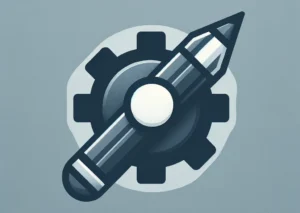The moment has come. You’ve been tinkering with the idea in the back of your mind, and your cursor has hovered over the ‘career change’ tab more times than you’d like to admit. Swapping server rooms for a fresh start isn’t just a daydream—it’s a doorway to a brand new chapter.
This post will navigate you through the essentials of transitioning out of an IT career, ensuring you land on your feet, ready for what’s next.
Quick Takeaways:
- Identify your transferable IT skills like problem-solving and project management to showcase your versatility across industries.
- Utilize platforms such as MentorCruise and LinkedIn to network, and consider further education or certifications to bridge skill gaps.
- Tailor your resume to the new field and prep for interviews with industry-specific knowledge, focusing on how your IT experience adds unique value.
Why Are You Considering Leaving IT?
Stepping away from the IT field? If you’re wrestling with this decision, know you’re not alone. The fast-paced world of information technology can be exhilarating, but it can also be draining, leading many to ponder a different path. Burnout is a familiar face in the IT crowd—long hours glued to monitors, keeping up with the relentless march of new technologies, and the pressure of solving complex problems on tight deadlines. Sometimes the spark fizzles, and what once was a passion turns into a slog.
Or maybe you’re craving a fresh start. A new adventure that’s not just a different flavor of code or another complex network to tame. It could be that the seed of an entirely different career is sprouting within you, one which IT no longer nourishes.
Whatever your reasons, it’s okay to feel this way. Recognizing that you’re yearning for change is the first step towards a fulfilling transition.
What Should You Consider Before Making the Jump?
Before you leap into new professional waters, pause and consider. Your current lifestyle may be steeped in the financial stability that an IT career affords. Can you maintain your well-being during a transition? Crunch some numbers and ponder the budget adjustments required if there’s a gap between careers.
Next, take stock of your skill set. What do you bring to the table that could shine in another industry? It’s not just technical prowess; think about your soft skills too.
Ask yourself, is additional schooling or certification in the cards? Sometimes, stepping into a new field means hitting the books again. Exploring this early on can set clear milestones on your journey.
Reflect on your long-term goals. Where do you see yourself in five years? Does this move align with your vision? Establishing this can ensure that the switch is not just a fleeting escape but a step towards a more satisfying future.
And don’t forget to network. Your colleagues and professional connections can offer valuable insights and even opportunities outside your current sphere. They could be the bridge to your next big thing.
How Can You Identify Your Transferable Skills?
Think of your IT experience as a treasure trove of marketable skills. When looking to hop industries, you’ll want to shine a light on your transferable skills. Start with your problem-solving prowess that’s been sharpened by fixing bugs and tackling system crises—this is gold in any sector.
Your project management abilities have been hammered into shape coordinating software releases and updates. A project is a project, whether it’s deploying a new app or launching a marketing campaign.
Highlight your knack for technical communication—translating complex jargon into digestible info is a prized asset. It shows your ability to bridge gaps between techies and non-techies, a skill many employers hunt for.
Also, flex your adaptability. IT is all about evolving with technology, and that skill of rapid learning and comfortable change is transferable to virtually any field.
An often-overlooked but unique skill you may have honed is creating user-friendly documentation or guides. In a world where user experience is becoming increasingly important across all industries, this expertise stands out and can open doors in areas such as content creation, educational technology, and more.
Lean on job descriptions and industry forums to match your skills with what’s in demand in your desired field. You’ll find that you’re not just an IT professional—you’re a skilled problem solver, a project whisperer, and a communication maestro.
Remember, as you craft the next chapter of your professional life, it’s not about turning your back on IT. It’s about taking a bold step forward with a wealth of experience that can propel you to new heights in any field you choose. So, keep an open mind and be ready to pivot your narrative; your IT background is more versatile than you may think.
Where Can You Find Support During Your Transition?
Hey there! I get the jitters just thinking about career transitions, but guess what? You’re not alone. There are plenty of treasure troves out there to help you transition smoother than a fresh cup of joe on a Monday morning.
Mentoring: Check out MentorCruise, a platform where you can link up with industry veterans eager to share their roadmap to success. It’s like having a GPS for your career switch!
Networking Opportunities: LinkedIn is your new best friend. Seriously, it’s not just for job hunting—it’s also a networking powerhouse. Dive into industry-specific groups, engage in discussions, and maybe even grab a virtual coffee with someone whose career path inspires you. Also, don’t miss out on local Meetup groups or professional associations that align with your new interests.
Professional Advice: If you’re craving some one-on-one guidance, consider career counseling. The National Career Development Association (NCDA) can point you to certified professionals itching to help you map out your journey. They’re like the personal trainers of the career world.
Educational Options: Now for the fun part. Want to broaden your horizons? Online courses and certifications are your golden tickets. Platforms like Coursera, Udemy, and Khan Academy have a smorgasbord of courses to satiate your intellectual appetite. Or, if you’re feeling academic, scope out your local community college’s evening classes.
Remember, the best thing you can do is to be a sponge—soak up all the knowledge and advice you can get. Each conversation, each course, each networking event is a stepping stone toward your new goal.
How Do You Prepare for a Non-IT Job Interview?
Alright, it’s Showtime! But before you step into the spotlight, let’s jazz up that resume and prep for the interview.
Tailoring Your Resume:
- Swap the jargon for jingles that resonate with your new industry. If ‘agile’ and ‘scrum’ were your old hits, tune your resume to play the greatest hits of your new field.
- Emphasize transferable skills. Project management, problem-solving, and teamwork are like the universal remote of skills—they work everywhere.
- Infuse your resume with keywords from the new industry. Job descriptions are your cheat sheet; use them to echo the language they speak.
Talking About Your IT Background:
- Be the bridge, not the island. Show how your IT skills can solve problems in the new field. Did you handle complex projects or lead teams? That stuff’s gold, so flaunt it.
- Spin a story around your transition—make it compelling. “I mastered X so I could conquer Y in your industry” sounds much cooler than “I did IT, now I want to try something else.”
Lastly, Interview Recon 101:
- Get the lay of the land by studying the company’s culture, values, and recent achievements. It shows you’re not just there for the paycheck but also to be part of their mission.
- Prepare some anecdotes. Remember that time you averted a crisis or nailed a project? Those tales are interview gold.
- Practice the STAR method—Situation, Task, Action, Result. It helps you answer those tricky behavioral questions like a pro.
- And here’s a unique nugget: Create a ‘value proposition letter’ instead of the same ol’ cover letter. This is your pitch, highlighting what you can do for them, not just who you are. It’s like saying, “Here’s what I bring to the party,” and everyone loves the life of the party, right?
Keep it real, and let your unique IT touch shine through. You’ve got a treasure trove of experience behind you, so stride in with confidence and a winning smile.
In wrapping things up, while we’ve got a roadmap for you, remember that the most scenic routes aren’t always on the map. Sometimes, going off the beaten path with a personalized touch or a bold move can make all the difference.
Warm wishes and cheers to your upcoming adventure!







